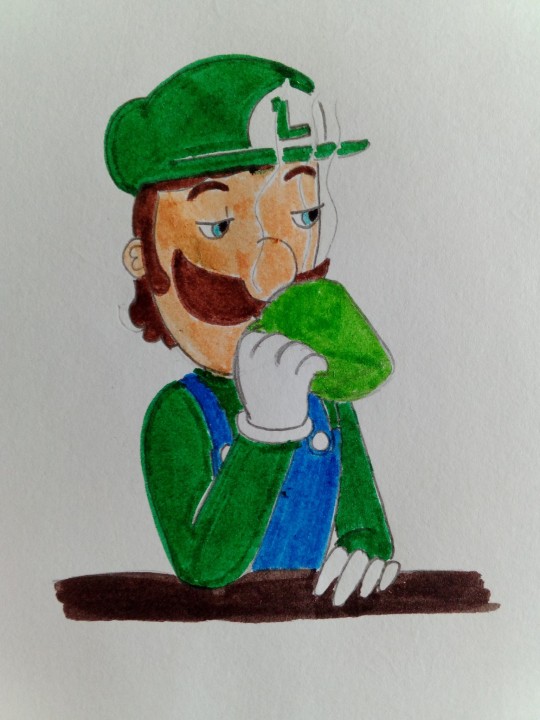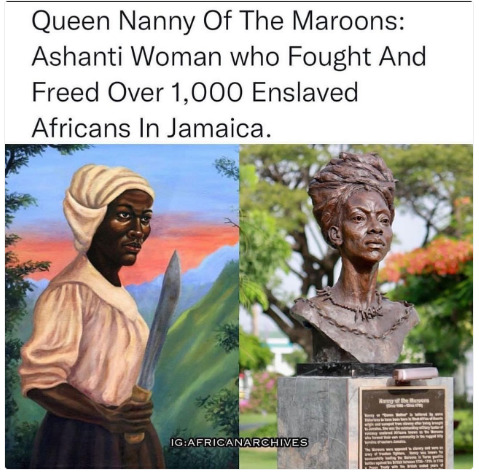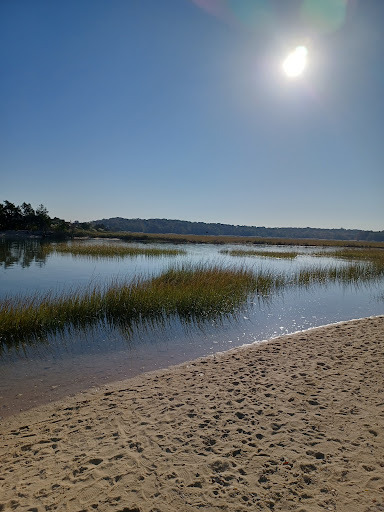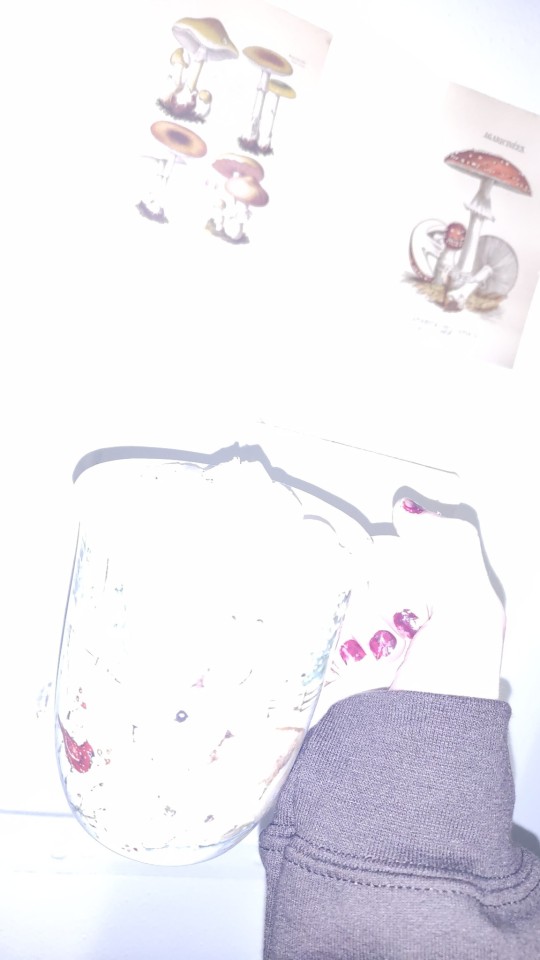#Cuffee
Text
Different Ways to Make Your Own Coffee at Home
You’re used to cooking meals in a skillet, so this method feels natural to you. To get it just right, though, might be tricky..............................
https://nextepiclife.com/3-different-ways-to-make-your-own-coffee-at-home/
#cup of coffee#Cuffee#nutrition#cafe#recipes#nature#kitchen#exercise#baking#gym#running#cafe aesthetic#cafe racer
0 notes
Link
Chapters: 1/1
Fandom: The Harder They Fall (2021)
Rating: General Audiences
Warnings: No Archive Warnings Apply
Characters: Cuffee (The Harder They Fall)
Additional Tags: Introspection, Gender Dysphoria, Drabble
Summary:
Cuffee is spitting mad.
0 notes
Text
Have an unimpressed Luigi.

6 notes
·
View notes
Text
Mekhi Cuffee: "A 1 night special. LIKE A FEM QUEEN. It’s the little things. Get in. #vogue"
Source
#music#edm#house music#dance music#electronic music#instagram#vogue ballroom#vogue dance#vogue fem#voguing#vogue#ballroom culture#ballroom scene#ballroom#dancer#dance#lgbtq#gay#queer#trans#nonbinary#black queer#black lgbt#black gay#black nonbinary#black trans#ota#open to all
81 notes
·
View notes
Text

From the Newark Star Ledger in New Jersey as shared by J Michael Raber on Facebook
Image by Art Cuffee
Article written by Tom Moon
Article title: Death Silences a Voice of Tremendous Potential
#jeff buckley#new jersey#From the Newark Star Ledger in New Jersey as shared by J Michael Raber on Facebook#tom moon
34 notes
·
View notes
Text

The strong presence of the sea is grossly under-examined in American literature, doubly so in African American literature. As Elizabeth Schultz observes, "Historically and culturally, the African American experience has been an inland one. Black Americans," she continues, "have not generally turned seaward in their literature." Although she comes to a "however" that adds the observation "the sea is not absent from African American literature," the rhetorical pose imagined in the claim that "the sea is not absent" is that it will take a good deal of searching to find it. And yet, as Jeffery Bolster observes in his ground-breaking 1997 study Black Jacks, "Sailors wrote the first six autobiographies of blacks published in English before 1800". Many of these autobiographies carry clear abolitionist intent and hint at the type of anti-slavery discussions carried on by sailors around the Atlantic world. When scholars of African American literature turn their attention to works written by sailors, like Olaudah Equiano's The Interesting Narrative of the Life of Olaudah Equiano, or Gustavas Vassa, the African. Written by Himself (1789), most suffer from the misplaced assumption Schultz points to, and thus fail to see the crucial link between sailors and black abolitionism. Indeed, what Crispus Attucks, Paul Cuffee, Robert Smalls, Frederick Douglass, and so many other black revolutionaries in America have in common is that they were all sailors or in some other way directly connected to the maritime trades.
— Matthew D. Brown, 2013. “Olaudah Equiano and the Sailor’s Telegraph: The Interesting Narrative and the Source of Black Abolitionism.” Callaloo: A Journal of African Diaspora Arts and Letters 36 (1): 191–201. doi:10.1353/cal.2013.0059 (Google Drive link)
‘Drunken Sailors’ by John Locker, 1829 (NMM)
#age of sail#black history#black sailors#sailors#naval history#maritime history#atlantic world#abolitionism#black jacks#olaudah equiano#john locker#maritime art#black history month
178 notes
·
View notes
Text

africanarchives —Nanny also known as Queen Nanny was a Maroon leader in Jamaica during the late 17th and early 18th centuries. Enslaved Africans who escaped & established independent settlements in the Americas were known as maroons.
—Nanny was a runaway slave from Western Africa who had been sold into slavery. It is usually assumed that she was born into the Ashanti tribe of modern-day Ghana.
—Nanny and her 4 brothers (all of whom went on to become Maroon leaders) were sold into slavery and eventually escaped to the highlands and jungles that still make up much of Jamaica. Nanny and one of her brothers, Quao, established Nanny Town in the Blue Mountains on the Eastern side of Jamaica.
—Nanny Town thrived because of its remote location in the highlands, far from European villages & difficult to attack. Nanny avoided attacking plantations and European towns, preferring instead to farm and trade with her neighbors in a civilized manner. She did, however, conduct multiple successful raids to free slaves trapped on plantations and her actions resulted in the emancipation of about 1,000 slaves during her lifetime.
—Nanny & the Windward Maroons flourished and multiplied during Nanny’s lifetime. The triumph of the Maroons threatened the British colonial authorities. Plantation owners demanded action from colonial officials after losing slaves and having their equipment and crops torched by Maroon raids.
—The Jamaican jungles were searched by hunting groups made up of British regular army soldiers, militias & mercenaries. Captain William Cuffee, often known as Captain Sambo, is said to have murdered Nanny in one of the war’s many brutal battles in 1733. The war lasted from 1720 to 1739, when a truce was declared; Cudjoe, one of Nanny’s brothers and a Maroon War leader, was the driving force behind the treaty.
—Following Nanny’s death, many Windward Maroons relocated to the more sparsely populated Western (or Leeward) part of the island. The British eventually seized Nanny Town and destroyed it in 1734.
136 notes
·
View notes
Text
Percy Jackson and Long Island
TL;DR: The CHB scenes of the new Percy Jackson show were shot near Vancouver, BC. Which is gorgeous but also it's so different from Long Island. You should look at some pretty pictures of Long Island below the cut.
-----------
Percy Jackson trailer came out today and it's GORGEOUS.
In particular, the CHB scenes are beautiful, and the Vancouver-area woods they used for location shooting are breathtaking. I'm very glad they shot on location there.
Also, I need people to know: That's NOT what Long Island looks like. That shoreline doesn't look like Long Island Sound. Those trees are not Long Island trees. That shot of campers crossing a rope bridge? Yeah, I'm willing to bet that shot alone contains more elevation change than all of Long Island.
So, when you picture the scenes in your head, maybe try this: replace the tall conifers with a forest of short maples, oaks, and beeches. The leaves are lime-and-emerald green in the summer, as is all the light that reaches the forest floor. The forest is open and sun-dappled, thinning out towards a shore of grasses and giant sand dunes, rolling towards a body of water that looks like the ocean, but calmer. Less terrifying. More familiar. You can't really see the other side, but you know it's there--you can see it if you go a little further out. There is the occasional Eastern White pine tree, but they're singular tall trees that stick out clearly above the otherwise low-lying and open landscape. Most Long Island trees are not tall--which is why Thalia's pine stands out so much. There are gulls and other seabirds everywhere, and you can hear their calls on the air. In the summer, the air is hot and humid, and the ground is damp. You can tell this land fades to wetland not far from here. There are no mountains, just gently rolling hills and windswept sand dunes.
Like I said, I'm glad they didn't schlep a production team and a bunch of child actors all the way across the country to film on location. Vancouver is beautiful, and I'm excited to see that version of camp.
But, in your mind's eye, at some point, perhaps think of Long Island. Think of low lying forests. Think of dunes and wetlands and gulls and scrub grass. Think of cloudless skies. Below the read more are some photos of Long Island nature reserves, beaches, and Native reservations (there are two of them on Long Island--Shinnecock and Poospatuck/Unkechaug*).
The place is beautiful, and deserves to be appreciated.

This photo of the Jerome A. Ambro memorial wetlands was found on zaubee.com, and was taken by Noelle Casey. The image depicts a tan sandy beach in the foreground, and low-lying grassy wetlands in the mid-ground. At the far left edge of the photo, you can see the first few trees of a forest that presumably continues off to the left. In the background, you can see forested gentle rolling hills. The bright midday sun is visible in the picture, and there's not a cloud in the sky.

Cuffee’s Beach on the Shinnecock Indian Nation’s territory near Southampton on Long Island, New York.
Photo by Jeremy Dennis (Shinnecock Indian Nation)
From <https://www.americanindianmagazine.org/story/Shinnecock-Nation>
This image shows a dry, grassy shore. Presumably, it is winter, since the short trees visible on the left of the landscape don't have any leaves. The viewer is looking out on a deep blue body of water, where the opposite shore is far away but visible. The picture is bathed in a golden, late afternoon light and the sky fades from a pale orange to a cloudless blue.

This is a photograph of Hither Woods Preserve, a park in Montauk. I couldn't find details on the photographer. The image shows a forest. The trees are thin, and the foliage is dense, but you can see sky through the light green leaves. The trees are thin, and straight, and there's broad leaf plants providing ground cover. Through these plants, you can see a brown forest floor that gently slopes upward. In the middle of the path, a brown winding trail is edged with sticks to make it stand out clearly.
This entire blog post about Rocky Point Pine Barrens State Park is worth a read, for the beautiful photography if nothing else.
*Just to clarify, Poospatuck is the name of the reservation itself, and Unkechaug is the name of the tribal community that lives on that reservation. The name of the reservation is taken from the nearby Poospatuck River.
6 notes
·
View notes
Text

Mekhi Cuffee
2 notes
·
View notes
Text

Paul Cuffee, shipbuilder, the wealthiest Afrikan in the Amerikkkan colonies, early Black Nationalist and Pan Africanist was born on January 17, 1759.
Paul Cuffee was born on January 17, 1759 during the French and Indian War, on Cuttyhunk Island, Massachusetts. He was the youngest son of Kofi or Cuffee Slocum and Ruth Moses. Paul's father, Kofi, was a member of the Ashanti ethnic group, probably from Ghana, Africa. Kofi had been captured at age ten and brought as a slave to the British colony of Massachusetts. His owner, John Slocum, could not reconcile slave ownership with his own Quaker values and gave Kofi his freedom in the mid-1740s. Kofi took the name Cuffee Slocum and, in 1746, he married Ruth Moses. Ruth was a Native American member of the Wampanoag Nation on Martha's Vinyard. Cuffee Slocum worked as a skilled carpenter, farmer and fisherman and taught himself to read and write. He worked diligently to earn enough money to buy a home and in 1766 bought a 116-acre (0.47 km2) farm in nearby Dartmouth, Massachusetts. The couple would raise ten children together, of which Paul was the seventh in line.
During Paul Cuffee's infancy there was no Quaker meeting house on Cuttyhunk Island, so Kofi taught himself the Scriptures. In 1766, when Paul was eight years old, the family moved to a farm in Dartmouth, Massachusetts. Cuffee Slocum died in 1772, when Paul was thirteen. As Paul's two eldest brothers had families of their own elsewhere, he and his brother John took over their father's farm operations and cared for their mother and three younger sisters. Around 1778 Paul persuaded his brothers and sisters to use their father's English first name, Cuffee, as their family name, and all but the youngest did. His mother, Ruth Moses, died on January 6, 1787.
In 1779, he and his brother David built a small boat to ply the nearby coast and islands. Although his brother was afraid to sail in dangerous seas, Cuffee went out alone in 1779 to deliver cargo to Nantucket. He was waylaid by pirates on this and several subsequent voyages. Finally, he made yet another trip to Nantucket that turned a profit.
At the age of twenty-one, Cuffee refused to pay taxes because free blacks did not have the right to vote. In 1780, he petitioned the council of Bristol County, Massachusetts to end such taxation without representation. The petition was denied, but his suit was one of the influences that led the Legislature in 1783 to grant voting rights to all free male citizens of the state.
Cuffee finally made enough money to purchase another ship and hired crew. He gradually built up capital and expanded his ownership to a fleet of ships. After using open boats, he commissioned the 14 or 15 ton closed-deck boat Box Iron, then an 18-20 ton schooner. Cuffee married Alice Pequit on February 25, 1783. Like Cuffee's mother, Pequit was also Wampanoag.[13] The couple settled in Westport, Massachusetts, where they raised their seven children: Naomi (born 1783), Mary (born 1785), Ruth (1788), Alice (1790), Paul Jr. (1792), Rhoda 1795), and William (1799)
In the late 1780s Cuffee's flagship was the 25-ton schooner Sun Fish, then the 40-ton schooner Mary. In 1795, the Mary and Sunfish were sold to finance the construction of the Ranger - a 69-ton schooner launched in 1796 from Cuffee's shipyard in Westport. By this time he could afford to buy a large homestead and in February 1799 he paid $3,500 for 140 acres of waterfront property in Westport. By 1800 he had enough capital to purchase a half-interest in the 162-ton barque Hero. By the first years of the nineteenth century Paul Cuffee was one of the most wealthy - if not the most wealthy - African American and Native American in the United States. His largest ship, the 268-ton Alpha, was built in 1806, along with his favorite ship of all, the 109-ton brig Traveller.
From March 1807 on, Cuffee was encouraged by members of the African Institution in Philadelphia, Baltimore, and New York to be involved in helping out the fledgling efforts to improve Sierra Leone. Cuffee mulled over the logistics and chances of success for the movement before deciding in 1809 to join the project. On December 27, 1810 he left Philadelphia on his first expedition to Sierra Leone.
Cuffee reached Freetown, Sierra Leone on March 1, 1811. He traveled the area investigating the social and economic conditions of the region. He met with some of the colony’s officials, who opposed Cuffee’s idea for colonization of Blacks from the United States for fear of competition from American merchants. Furthermore, his attempts to sell goods yielded poor results because of tariff charges resulting from the British mercantile system. On Sunday, April 7, 1811 Cuffee met with the foremost black entrepreneurs of the colony. They penned a petition for the African Institution, stating that the colony's greatest needs were for settlers to work in agriculture, merchanting and the whaling industry, that these three areas would best facilitate growth for the colony. Upon receiving this petition, the members of the Institution agreed with their findings.
In 1816, Cuffee envisioned a mass emigration plan for African Americans, both to Sierra Leone and possibly to newly-freed Haiti. Congress rejected his petition to fund a return to Sierra Leone. During this time period, many African Americans began to demonstrate interest in emigrating to Africa, and some people believed this was the best solution to problems of racial tensions in American society. Cuffee was persuaded by Reverends Samuel J. Mills and Robert Finley to help them with the African colonization plans of the American Colonization Society (ACS), but Cuffee was alarmed at the overt racism of many members of the ACS. ACS co-founders, particularly Henry Clay, advocated exporting freed Negroes as a way of ridding the South of potentially 'troublesome' agitators who might threaten the plantation system of slavery. Other Americans also became active, but found there was more reason to encourage emigration to Haiti, where American immigrants were welcomed by the government of President Boyer.
In the beginning of 1817, Cuffee’s health deteriorated. He never returned to Africa. He died on September 7, 1817. His final words were "Let me pass quietly away." Cuffee left an estate with an estimated value of almost $20,000.
Source: Wikipedia
12 notes
·
View notes
Note
Going through Illusion-New York being in awe at the imagery- and then suddenly getting hit with the realization that, with Cuff being to one to send the "WAKE UP" messages, that means all those PUNS also have to be coming from him as well. JUST WHEN I THINK I CAN'T LOVE THIS WRIST IDIOT ENOUGH (I'm particularly a fan of "Cuffee" LOL! )
I KNOW.
He's so dumb.
I love him so much.
5 notes
·
View notes
Photo

abby’s internal monologue is just “i wanna goooooo home.” unfortunately, she is home. it is her couch. she can never be free
[ALT ID: A digital drawing of three people sitting on a mustard yellow couch. One has long pale hair tied into a single braid and wears a heather grey shirt that reads ‘Simon & Garfunkle,’ a pair of ripped jeans cuffeed below the knee, and coral sandals with velcro straps. They are looking fondly at the person sitting in their lap, who wears an asymmetrical burgundy suity with black accents patterned with silvery pinstripes. They also wear a heavy golden necklace, cuff, and earrings, and bright green doc martens. They have one arm looped around the blond’s shoulders and are gesturing dismissively with the other. The blonde has a speech bubble reading, “We have loved each other for millennia, since long before the stars had human names.” The person in burgundy’s speech bubble interrupts the first, saying “We are professional rivals.” The two of them take up most the couch. The third person sits slumped on the far arm of the couch with her head in her hands and a phone dangling from her left hand. She wears short denim shrots and an orange t-shirt, and an arrow points to her from below with text reading “The actual protagonist (grudgingly).”]
#you ever stay up too late spending WAY too long on a joke that's only funny to you#anyway#my art#story: apostasy#ch: na'ir#ch: oriphiel#ch: abby#11 yr old abby walks into a catholic church to talk to a priest#and asks 'what do you do when the angel of death volunteers to be your guardian angel'#24 yr old abby lays her face down on the bar and asks 'how do you get the angel of death and their demon boo to pitch in on rent'#na'ir helpfully pops in to point out they're not really angels/demons that's a weird simplification on the part of humans and th—#and gets a PBR dumped over their head
14 notes
·
View notes
Text

" cuffee is delicius, if yu dun't agree, yu're wrung. "
#ic ;; blue bird bloom#;; dash commentary ;;#verse ;; pokemon ;; beyond destructing and falling petals
2 notes
·
View notes
Text
@picavecalyx said: " I can make yu sume cuffee? "

coffee? he heard coffee. local paldean teen in zombie mode. “please.”
2 notes
·
View notes
Text
*pronounces Cuphead like cuffeed*
2 notes
·
View notes

